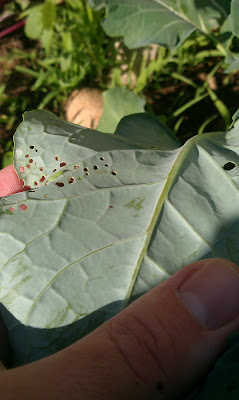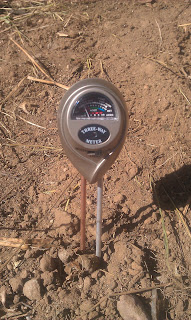
Lady bugs are good luck!
They are also organic insecticide for a garden.
Last year when I found dozens
of them in what would soon become my own back yard, I knew it was on!
The first step was to tame the beast of a
bougainvillea that had taken over two thirds of the space. Turned out to be two bougainvillea and some other woody vine bush. The images below chronicle the many weekends it took to get them trimmed back and cleared out.
It was this bougainvillea that inspired me to take a week off of work and spend it in my back yard. It was just so monstrous and I really wanted to get a garden going this year. So - I did it. I took four days off work, saved the money on travel and began transforming my own back yard into a worthy retreat from the day to day that I can escape to all year round.
It did not take long for me to realize I needed help!
Thank goodness I discovered
This book - is amazing!
Its chalked with all you need to know to garden in Southern California's soil and climate. Everything from lawns and flowers to trees, succulents, fruits, veggies & herbs are covered. The book is laid out in months of the year and a check list for each that includes what to plant, prune, pick, fertilize, buy, water and what pests or disease to be on guard for. A library of seed, plant and garden supply sources is in the back. Pages have step by step instructions and reads like a gardening for dummies.
Now that my area was clear of growth
it was time to see just what kind of soil I was dealing with.
I am very lucky - my soil type is
loam,
which is ideal for growing plants.
I checked my
soil pH multiple times across t
he yard and in all areas it around 7.
Again - perfect!
I will need to conduct a drainage test to be sure water is absorbed at a rate of about 1/4 inch or more per hour to be sure my plant's root systems will grow deep and therefore
make the plant stronger. If drainage is poor Ill need to go with above ground garden boxes.
I scanned through the November, December & January sections of my book looking to see what edible plants I could put in the ground first. Here is my planting schedule.
November
Garlic
Broccoli
Artichokes
Asparagus
Brussel Sprouts
December
Celery
Herb Garden in indoor pots to transfer to the ground in Spring.
(Marjoram, Parsley, Rosemary, Sage & Thyme)
January
Blueberries (Rabbit eye
or Southern High Bush)
Dwarf Fig Tree
Creating this planting schedule really motivated me to meet the dates. I began chipping away at this project from multiple angles to stay on target.
Ultimately the goal is to fertilize the garden with compost from a
worm composting system. But based on my budget and the time to produce compost I won't have that cycle in full swing until late November.
So I purchased some organic blood meal and vegetable fertilizer to support my winter vegetable schedule.
In addition to the garden I insisted that I wanted to raise a few chickens in my back yard. I was so excited to find out that I live in an area in San Diego where
chickens are permitted. I looked up a few places to purchase chicks and priced out a few coops. Ill be eating my own eggs for breakfast before you know it,
raising my own organic free range chickens!
So I fixed the fence and worked the chickens into the budget for December.
I have a dog that often poops in the back yard. With chickens on the way I needed add their poop to the equation and figure something out.

So thanks to
Mike Levinston on YouTube I was able to quickly put together my own dog poop compost system to keep it from contaminating my vegetable garden.
Next it was time to imagine the space.
I took measurements of the yard in feet and then converted them to inches to play around with what I wanted on a piece of paper.
The image above has 6 square gardens, space for the fig tree, space for the chicken coup and a large area reserved for a table for outside dining in the summer. I arranged my gardens based giving them the most sunlight possible and allowing myself enough space to walk and work around them.
When I thought I had it just right I re-created the spaces in the backyard with warning tape so I could walk around and interact with them a bit more.
A lot of progress - in a short period of time. Im proud of myself. Happy to report I am right in line with my budget and really enjoying the work.
My key next steps include:
Completing that drainage test.
Purchasing seed.
Pre-fertilize the soil based on the winter vegetable (2 weeks prior to planting).
Maintaining a weed free yard by covering areas I am not currently using with mulch.
More blogging to come ......














































